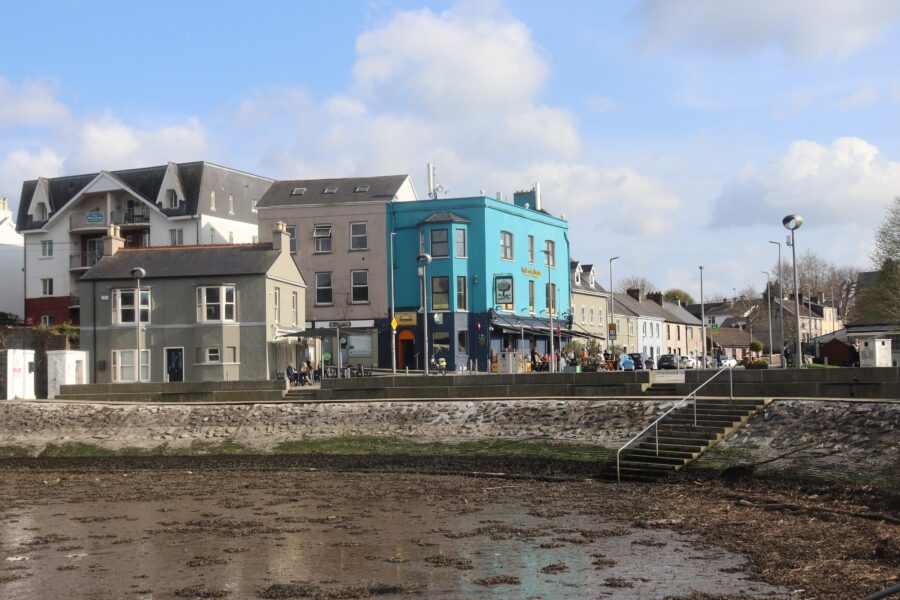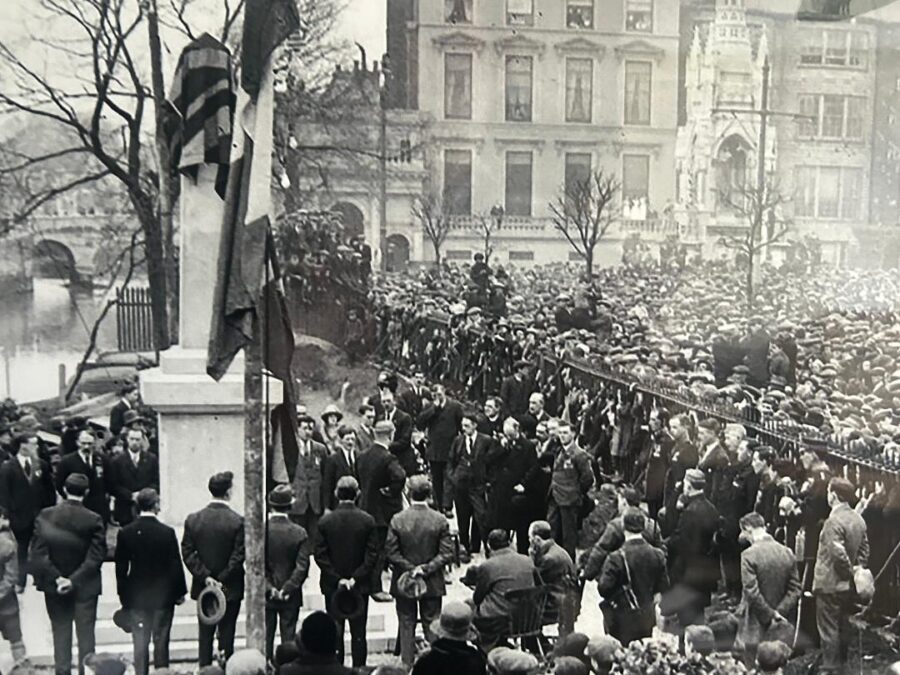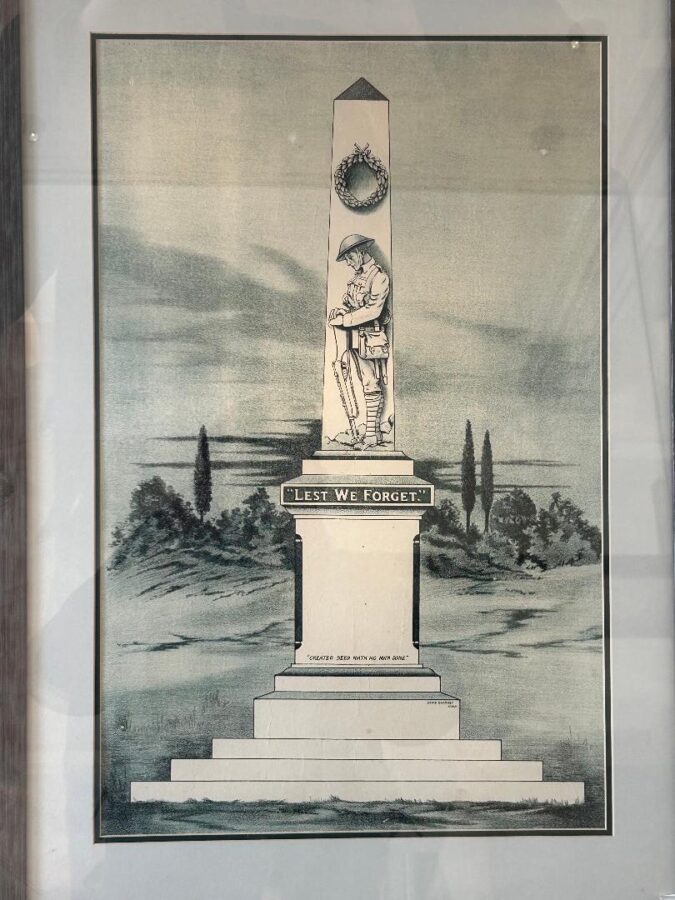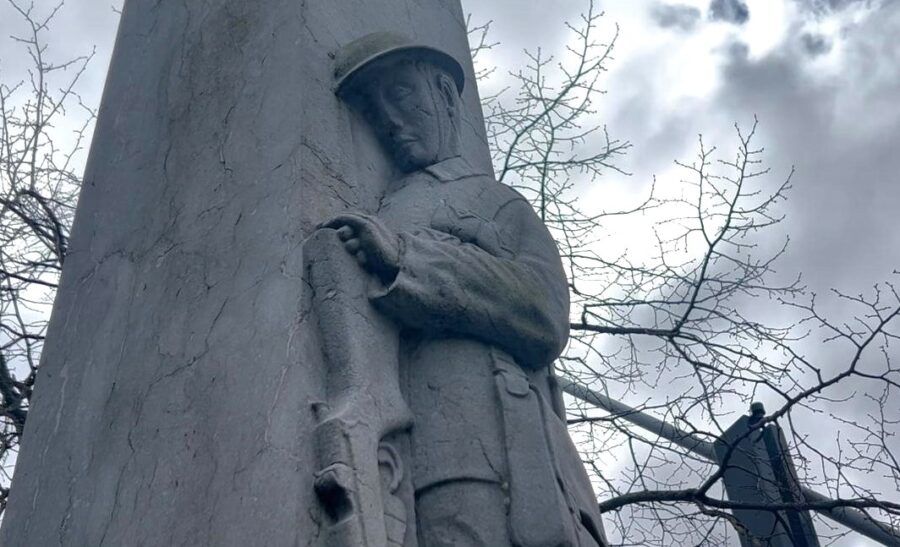
Kieran’s Our City, Our Town Article,
Cork Independent, 8 May 2025
Making an Irish Free State City – The Blackrock Fishing Community Speak Out
Early summer coincides with warmer days to host historical walking tours and also to tie some of the tours to my research around early Irish Free State or Cork in the 1920s. My historical walking tour of Blackrock – coming up again on Saturday 24 May in association with the Cork Harbour Festival – is an opportunity to once again take interested people across the rich historical landscape of Blackrock Village.
Through ongoing research for this column, I came across an article in the Cork Examiner published on 12 January 1925. It provides insights into the fishing community in Blackrock one hundred years ago and their challenges in the early Irish Free State.
A meeting was held at the Recreation. Hall, Blackrock with the object of developing the Lee salmon fisheries, as well as securing financial aid for the net fishermen engaged in such fisheries in order to enable them to procure suitable equipment. There were 32 licensed boats, over 100 fishermen – many of whom has years of experience – and circa 1,000 dependents in the Blackrock area on the local fishing industry. The industry in Blackrock yielded on average £1 per salmon caught and some years over £100,000 salmon could be caught by the Blackrock community. The community at Blackrock was notably up there as one of the largest fishing communities in Ireland.
At the meeting there was a large and representative attendance of net fishermen from Cork and Blackrock present while Mr Michael Egan, TD and representatives of the Cork Harbour Board were also present.
Fr T Murphy, CC, Blackrock, occupied the chair. He noted that it was absolutely necessary that the conditions of the fishermen should be improved; “We are within a few days of the new season and I hope that it will be a better season than last season and prove of great benefit to the fishermen and their families and the whole district”.
Fishing community representative Mr Michael Dorney, highlighted that the Blackrock fishermen suffered severely during the Black and Tans regime; “We were unable to properly follow our political beliefs for the advancement of the national cause, and were faced by distress…The fishermen are entitled to consideration for all they have gone through”. Mr Dorney also complained of the lack of suitable grounds and landing places around Blackrock and urged the necessity of having proper gear and equipment provided for the fishermen.
Another fishing community representative, Mr William J Deasy, said up to eight or nine years previously the industry was in a flourishing condition. Sufficient money was then made during the season by the Lee net fishermen to support their families, even though no other work was available during the close season. Within more recent periods, however, that had not been so, and since 1918 many families had been practically starving during the winter months.
Mr Deasy continued that when British troops and Black and Tans swarmed the country and with the knock-on curfew law they could not ply their craft at night. He noted; “Even when such law was not in operation it was not safe for them to work at night; in fact their boats were commandeered and misused and their nets destroyed, and when the men themselves ventured out for a haul they were fired on”.
Mr Deasy detailed that poaching, poisoning and destruction went on in both upper and lower waters. It was a state of affairs that the Conservators were powerless to effectively deal with owing to the conditions prevailing; “The river became so denuded of fish that from 1920 to 1923 the industry was a hopeless failure. How the fishermen had been able to live at all during the past winter was almost a mystery, because the past season has proved a hopeless one, and then there was no work available during the close season”.
Mr Deasy outlined that in October 1924 an effort was made to revive the oyster fishery, which managed to keep off starvation for that time, but in early 1925 the net fishermen found themselves struggling to afford the high price of material for “gear, twine, ropes, etc”. In addition, Mr Deasy asserted that the boats in use were old and almost unseaworthy and a positive danger in the rough weather to be expected in early spring.
Mr Deasy concluded that previous to the recent by-election the fishermen had heard a good deal about the intentions of the Government to give “paternal care towards fostering their dying industries”. Mr Deasy called for a small grant in aid of the fishing industry and to bring the matter before the Minister for Fisheries.
Mr J Dinneen, representative of the Cork Net Fishermen Association, complained that their nineteen boats had suffered an untold loss by being deprived of their landing place in consequence of the Tivoli reclamation scheme. He noted; “Forty or fifty feet of water had now been made available at that place, and the fishermen had no suitable landing place there…If a high-water fishery were made below Tivoli and another at Barrington’s it would be a great benefit to the Cork and Blackrock fishermen”.
Mr Michael Egan, TD, representing the Cumann na nGaedheal government, responded to the various interventions from the floor saying he could assure them that the matter of fishing was of vital importance to the country. He noted that he would bring the asks of the meeting to the relevant Minister.
Exploring the now digitised Department of Fisheries reports from the late 1920s, it is clear that the challenges of Blackrock fishing community were also seen in other Irish coastal villages and that equipment shortages were met through larger national loan schemes, but these were developed slowly over the ensuing years by the Department due to financial prudence.
Caption:
1303a. Blackrock Pier, present day (picture: Kieran McCarthy).
Next May Walking Tours with Kieran (All free, two hours, no booking required).
Saturday afternoon, 24 May, Stories from Blackrock and Mahon, Historical walking tour of Blackrock Village, from Blackrock Castle to nineteenth century houses and fishing; meet in adjacent carpark at base of Blackrock Castle, 2pm.
Sunday evening,25 May, The Lough and its Curiosities, historical walking tour; meet at green area at northern area of The Lough, entrance of Lough Road to The Lough, Lough Church end; 6.30pm.
Friday evening, 30 May, Cork Through the Ages, An Introduction to the Historical Development of Cork City; meet at the National Monument, Grand Parade, 6.30pm.



